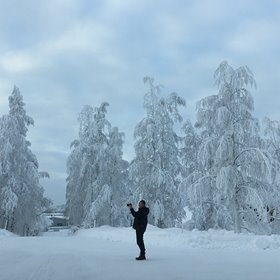 Don’t look down
Don’t look down
words by Brad Rimmer
Artsource Global City Residency Basel
October to November 2017
My six-week residency at Atelier Mondial in Basel commenced on 1 October 2017. Wonderful Basel, a small city with incredible museums and galleries, is perfectly located to access the rest of Switzerland and Europe by rail and plane. This was my first major residency.
I had some ideas around the work I would do during the residency but left the process open to new experiences.
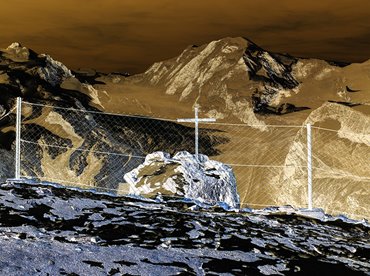
Initially I travelled to see as much art as possible: starting at the Venice Biennale and then on to Paris for the Irvin Penn and David Hockney retrospectives; Berlin for exhibitions by various German and international artists including Wim Wenders and the American Alec Soth; the Louisiana Museum of Modern Art in Denmark to see Being There[i], an exhibition of ten international contemporary digital artists and the major exhibition of the Dutch photo artist Rineke Dijkstra; and finally, to Stuttgart and the work of Otto Dix. Early in the residency, I also attended the Bologna Photo festival Foto/Industria[ii], A festival supported by the MAST Foundation that focused on the historical and contemporary world of labour and production that included exhibitions on Thomas Ruff, Alexander Rodchenko, Joan Fontcuberta and Lee Freelander. Unfortunately, I missed the two major European Photography Festivals, Spain’s PHotoEspaña[iii] and Rencontres d'Arles[iv] in France that took place in June and September before I arrived.
At the end of my residency I returned to Paris for Paris Photo[v] and used this event to catch up and reconnect with a curator and photographers that I have worked with in the past. It was a perfect opportunity to recognise and consider my Western Australian-based work in the context of the international scene.
It was a reminder of how important it is for Western Australian artists to exploit what makes our stories unique.
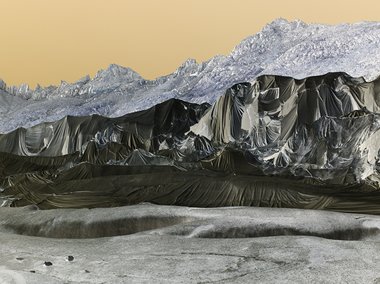 Back in Basel, I became interested in doing a project about the Alps after discovering the Alpine landscape paintings of Casper Wolf at the Kunstmuseum Basel. I explored the contrast between his scenes of wonder and dread of nature and the human relationship with the Alps then and now. I was reading how every summer a team of locals and scientists attempt to protect the Rhone Glacier (located in central Switzerland) from melting by covering the glacier with white blankets because it is retreating faster due to rising global temperatures — as well as stories of missing people resurfacing within the melting glaciers years after they had disappeared. One story in particular that stood out was the recent discovery of Mr Marcelin Dumoulin and his wife Francine Dumoulin, who disappeared on August 15, 1942 after the couple took a short cut across the Tsanfleuron Glacier and tragically fell into a crevice whilst on their way to check on their cattle in the neighbouring canton. The couple’s mummified bodies were discovered together preserved in the melting glacial ice at 2,600 metres, 75 years later.
Back in Basel, I became interested in doing a project about the Alps after discovering the Alpine landscape paintings of Casper Wolf at the Kunstmuseum Basel. I explored the contrast between his scenes of wonder and dread of nature and the human relationship with the Alps then and now. I was reading how every summer a team of locals and scientists attempt to protect the Rhone Glacier (located in central Switzerland) from melting by covering the glacier with white blankets because it is retreating faster due to rising global temperatures — as well as stories of missing people resurfacing within the melting glaciers years after they had disappeared. One story in particular that stood out was the recent discovery of Mr Marcelin Dumoulin and his wife Francine Dumoulin, who disappeared on August 15, 1942 after the couple took a short cut across the Tsanfleuron Glacier and tragically fell into a crevice whilst on their way to check on their cattle in the neighbouring canton. The couple’s mummified bodies were discovered together preserved in the melting glacial ice at 2,600 metres, 75 years later.
I visited and photographed some of these alpine locations and will exhibit some of this work in May at the new exhibition space at Artsource Old Customs House. Many of us live in heavily altered human environments but the European Alps retain much that has been untouched for thousands of years.
They are visited by millions of people every year. From ancient times to the present, the Alps have had mythological, spiritual and romantic significance. Recognisable peaks like the Matterhorn have become trademarks for chocolate companies and the like — and their rugged profiles have filtered into our everyday lives in places far away.
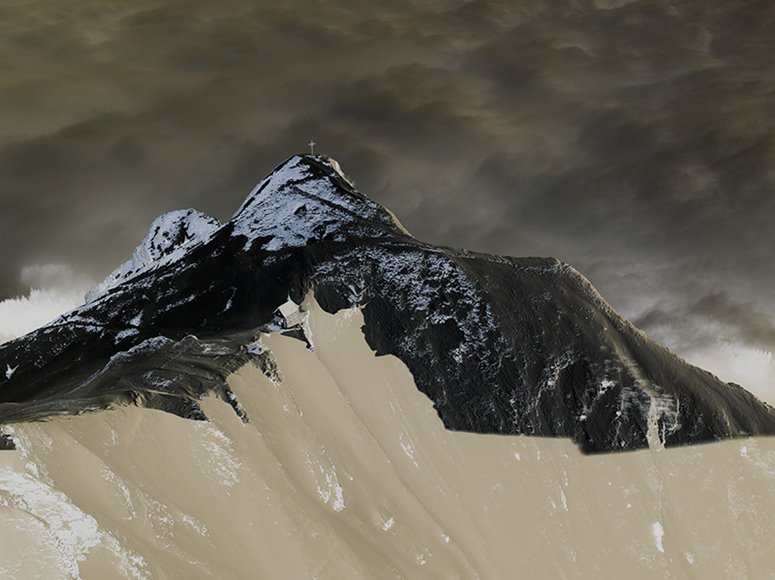
In the past century, advances in engineering in the Alps have made access to viewing platforms easy and now thousands of tourists line up to photograph these scenic vistas every day. I wanted to alter these views and thereby question the experience of what we already know in our collective memories.
By deliberately inverting the image into an unnatural colour palette, the landscapes became foreign and uncomfortable: they could easily be on Mars.
My six weeks passed quickly. First taking a week or two to visit as many museums as I could within Switzerland and Europe, then having time to consider and reflect and concentrate wholly on my art practice without interruption, was a luxury that I had never experienced before. After I left, I was included in the Autumn Group exhibition with other guest artists at Atelier Mondial[vi] curated by Alys Williams (Director of the VITRINE Gallery, London/Basel).
I feel I needed another month to really maximise the momentum I had gathered in the last three weeks of the residency. Even so, I’m grateful for this experience. I took the opportunity to try a new approach to my practice and I’m excited about where this will take me in the future.
Artist Bio
Raised in Wyalkatchem in the Central Wheatbelt region of WA, Fremantle based photographer Brad Rimmer seeks to uncover the human within often alienating everyday environs. He continues to use his artistic practice to probe at the essence of rural Australia and the emotional impact of the natural landscape upon individual psyches. www.bradrimmer.net
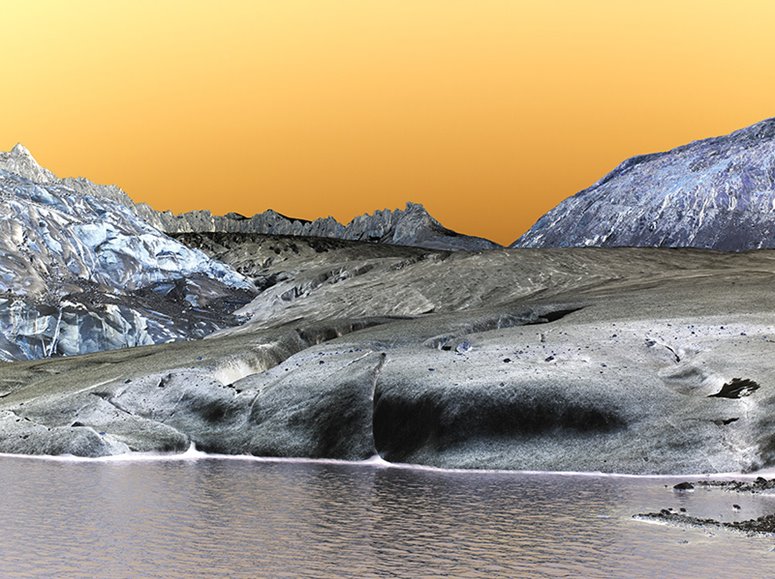
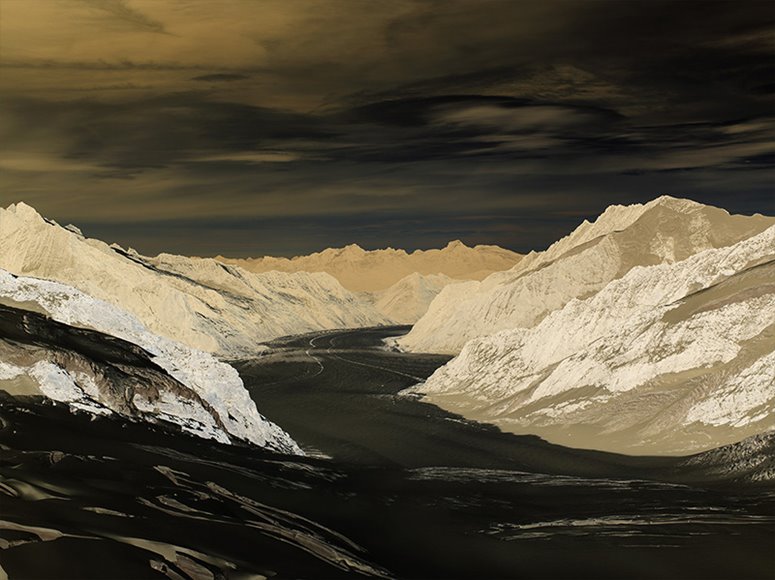
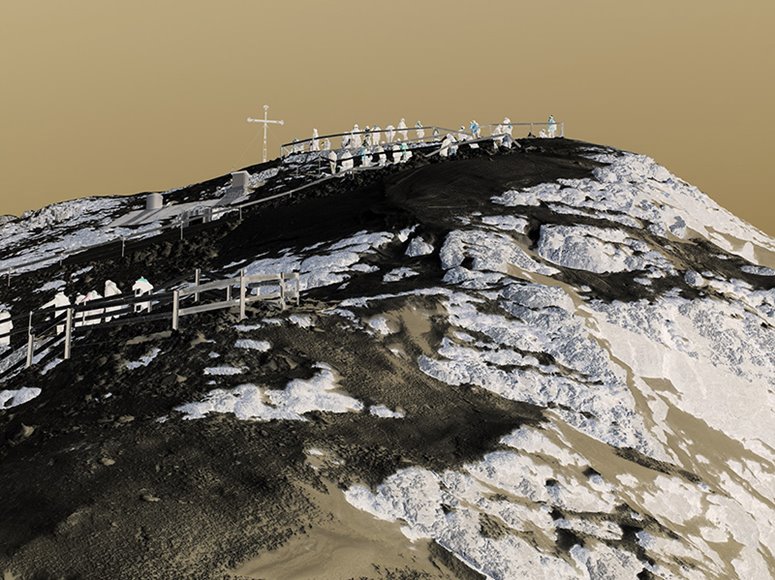
Images
-
Brad Rimmer. Image courtesy of the artist.
-
Brad Rimmer, Gorner Glacier, 2017. Archival inkjet print from digital photograph, 134 x 100cm.
-
Brad Rimmer, Rhone Glacier, 2017. Archival inkjet print from digital photograph, 134 x 100cm.
-
Brad Rimmer, Klimsenhorn Chapel, 2017. Archival inkjet print from digital photograph, 134 x 100cm.
-
Brad Rimmer, Rhone Glacier, 2017. Archival inkjet print from digital photograph, 134 x 100cm.
-
Brad Rimmer, Aletsch Glacier, 2017. Archival inkjet print from digital photograph, 134 x 100cm.
-
Brad Rimmer, Pilatus, 2017. Archival inkjet print from digital photograph, 134 x 100cm.